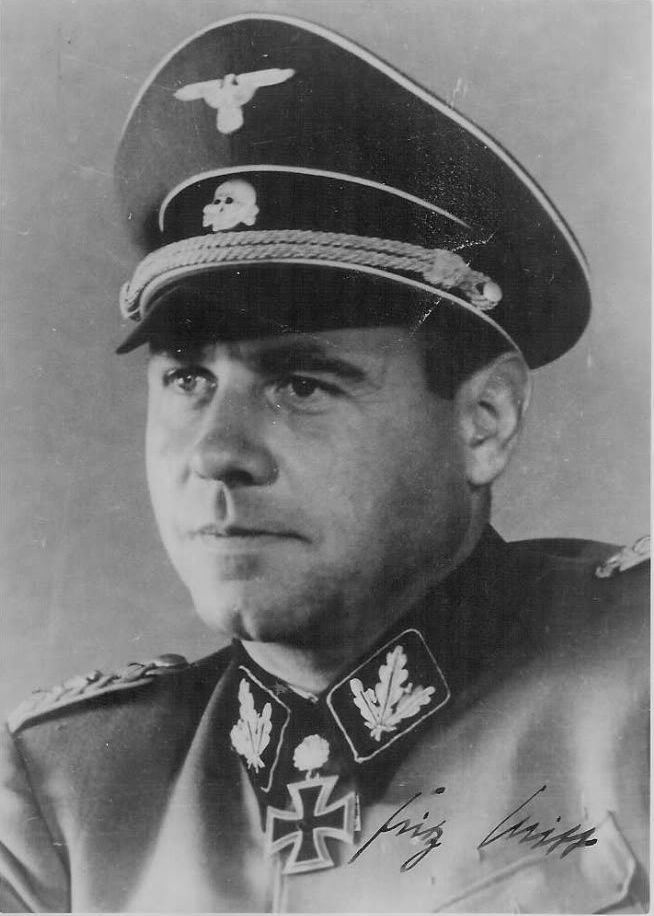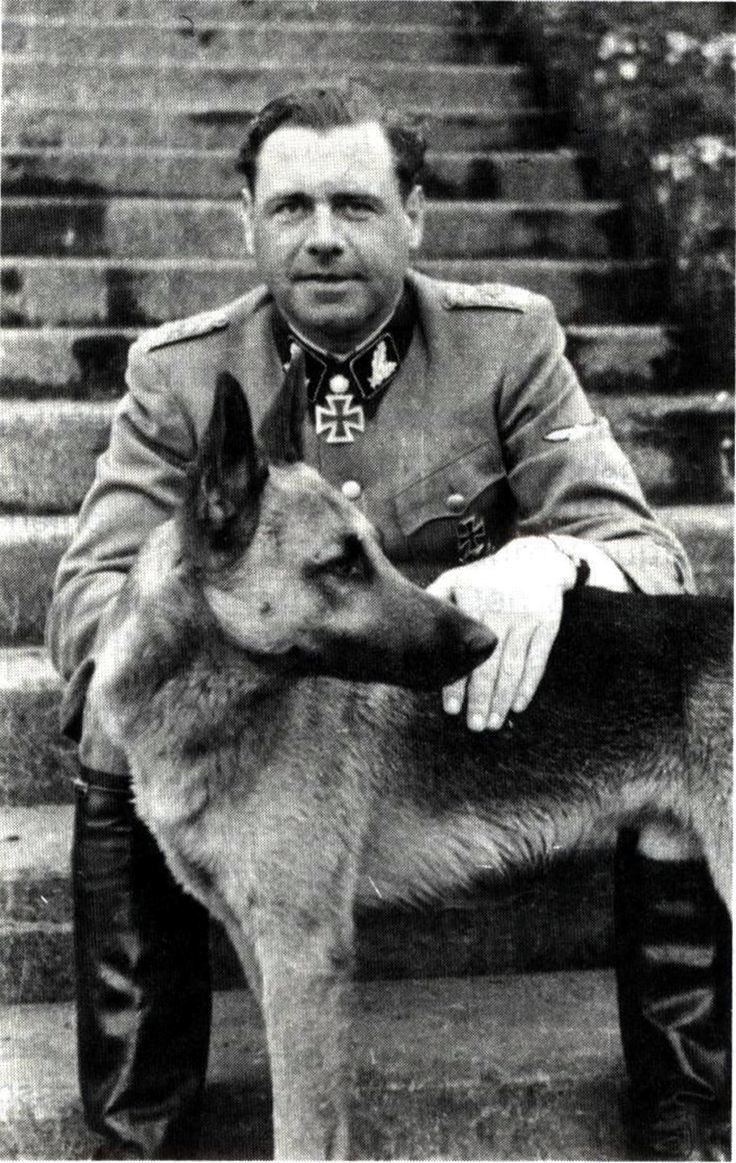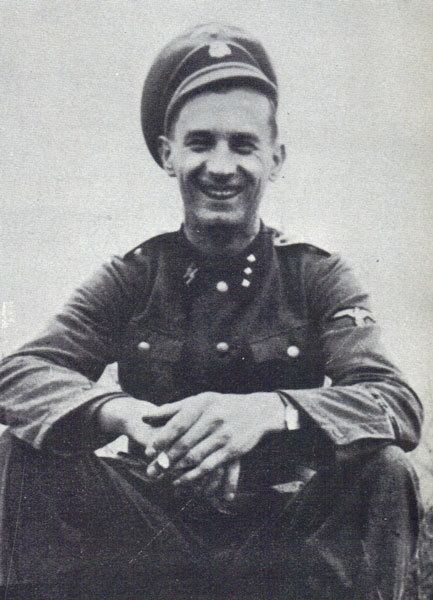Years of service 1933–44 | Battles/wars World War II Name Fritz Witt | |
 | ||
Born 27 May 1908Hohenlimburg, Province of Westphalia, Kingdom of Prussia, German Empire ( 1908-05-27 ) Buried at Cimetiere militaire allemand de Champigny-St. AndreBlock 8—row 12—grave 1027 Rank Brigadefuhrer and Generalmajor of the Waffen-SS Service number NSDAP #816,769SS #21,518 Commands held 12th SS Panzer Division Hitlerjugend Similar People Sepp Dietrich, George Alan Vasey, Iven Mackay | ||
Fritz Witt (27 May 1908 – 14 June 1944) was a German Waffen-SS commander during the Nazi era. During World War II, he served with the SS Division Leibstandarte before taking command of the SS Division Hitlerjugend. He was killed in action in June 1944.
Contents

Early life and career

Born in 1908 into a family of a merchant, Witt worked in the textile industry until he lost his job in June 1931. Witt joined the Nazi Party (NSDAP) (Nr. 816,769) in December 1931 and the SS (Nr. 21,518). In March 1933, Witt became a member of the SS-Stabswache "Berlin", a bodyguard unit to protect Adolf Hitler. It was renamed to SS-Sonderkommando "Berlin" in September and in the following month, Witt was appointed a platoon leader. This unit was the nucleus of the later SS Division Leibstandarte (LSSAH). In January 1935, Witt was appointed company commander in the SS-Standarte "Deutschland", a unit that later became part of the SS Division Das Reich.
World War II

Witt participated in the Invasion of Poland in September 1939 as a member of the motorized infantry regiment "Deutschland", which was subordinated to Panzer Division Kempf, a combined arms unit commanded by General Werner Kempf. Witt's unit took part in the Battle of the Border and then in the fighting at Zakroczym where men from Panzer Division Kempf committed the Massacre in Zakroczym on 28 September 1939. During the campaign, Witt was awarded both classes of the Iron Cross.

On 19 October 1939, Witt was appointed battalion commander in the SS-Regiment "Deutschland", leading the battalion in the Battle of the Netherlands and the Battle of France. On 4 September 1940, Witt was awarded the Knight's Cross of the Iron Cross. He was then transferred to the LSSAH on 16 October 1940 as battalion commander.
As battalion commander in the LSSAH, Witt participated in the Battle of Greece (6–30 April 1941), the Axis invasion of the Allied Kingdom of Greece. On 11–12 April 1941, Witt's battalion participated in the assault on the Klidi Pass, sustaining heavy casualties in the attack. On 14 April 1941, the battalion fought against British forces in the Battle of Kleisoura Pass. There, Witt's brother, a member of the same unit, was killed in action.
Divisional command
On 1 July 1943, Witt was promoted to SS-Oberführer and was appointed commander of the 12th SS Panzer Division Hitlerjugend, the majority of its enlisted men were drawn from members of the Hitler Youth. His previous command of the SS-Panzergrenadier-Regiment 1 was given to Albert Frey. In the following months, Witt oversaw the formation and training of Hitlerjugend division at Beverloo Camp, Belgium.
In expectation of the Allied invasion, 12th SS Panzer Division Hitlerjugend was ordered to relocate to France in March 1944. On 1 April 1944, elements of the division committed the Ascq massacre in Ascq, France. In command of those troops was SS-Obersturmführer Walter Hauck, a company commander in the Hitlerjugend division.
On 20 April 1944, Witt was promoted to SS-Brigadeführer und Generalmajor of the Waffen-SS. On 6 June 1944, the Western Allies launched the Invasion of Normandy. During the Normandy Campaign, Kurt Meyer, commander of the Hitlerjugend 25th Panzer Grenadier Regiment, used the Ardenne Abbey for his regimental headquarters. On 7 June, members of the division under Kurt Meyer illegally executed Canadian soldiers in what became known as the Ardenne Abbey massacre.
On 14 June 1944, Witt was killed in action by a Royal Navy naval artillery barrage which hit the divisional command post at Venoix. He was initially buried at Venoix and later reinterred at Champigny—Saint-André-de-l'Eure, France.
